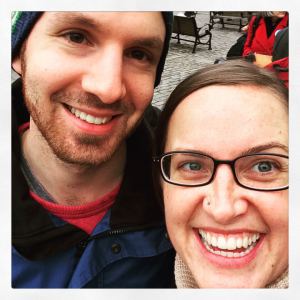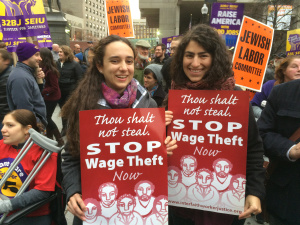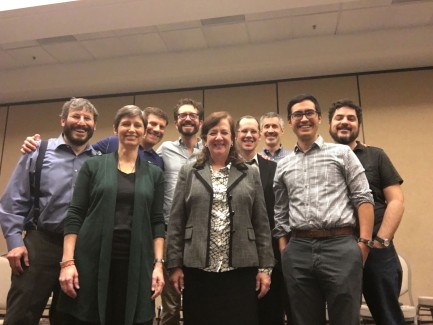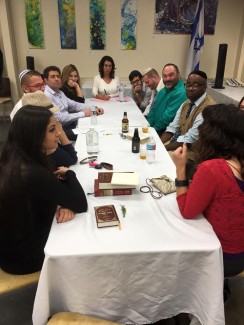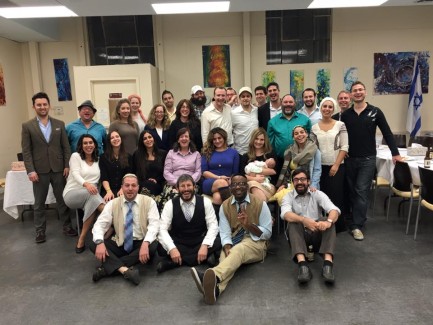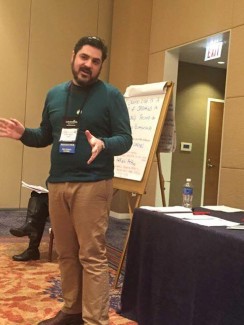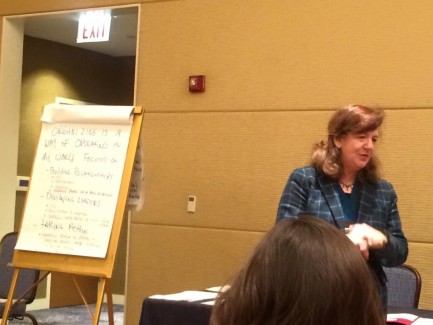This piece by rabbinical student Josh Weisman was originally published on State of Formation.
Chanukah is a festival of lights, which makes it an opportunity to reflect on what we see and how we see it. The rituals of Chanukah are all about light and seeing: we’re commanded to kindle Chanukah lights each night; we’re commanded to enjoy their light; we’re commanded to spend time appreciating their glow. Chanukah is all about our eyes. Rabbi Shlomo Carlebach (Reb Shlomo), following the Hasidic master Rebbe Nachman of Bratslav, took this focus on light and the eyes to teach that Chanukah is a time for fixing the eyes, for repairing the sins we have committed with our eyes.[1] Chanukah is a chance to correct the ways we fail to see what is really in front of us, or the ways we see with distorted vision.
Last year, Chanukah came on the heels of the failure to indict the white police officers who had killed Michael Brown and Eric Garner. Since then, police killings of unarmed black people — including Jamar Clark, Tamir Rice, and many others — have sadly continued. The impunity and lack of transparency surrounding these cases — and others like the death in police custody of Sandra Bland — has also continued. In response to this ongoing tragedy, a movement has taken shape around a truth so simple it should never have needed to be stated in the first place: Black lives matter. Many white people – including white Jews, white people of all faiths, and secular white people – are opening their eyes to the ways in which they have failed to see Black people as they truly are, and the devastating consequences of this in terms of Black lives lost to racially-influenced police violence. Black people – Black Jews, Black people of all faiths, and secular Black people – and their allies of all races are taking bolder action than they have in years to demand an end to the deaths of Black people at the hands of police. Those of us who are white are starting to recognize that even when we don’t hold a gun, our distorted vision has negative consequences, such as when we see news of these killings and often see a Black “suspect” instead of a Black son, brother, father, child of God. We have sinned with our eyes and it’s time to fix our eyes – to address the damage done, and to learn how to see truly.
That a real error is taking place is not merely in the eye of the beholder. White people literally can’t see Black people right, and the result is sometimes a matter of life and death. Research studies collated by faith-based community organizing leader Gordon Whitman demonstrate the following alarming facts about how white people and police tend to see, or fail to see, Black people: White people see Black boys as older – and therefore more threatening – than they really are, by an average of over four years. Police who dehumanize Blacks are more likely to have used force against Black children. In simulated tests, white police more readily shoot unarmed Black people than unarmed white people. Reb Shlomo said that “with my eyes I can take everything from you.”[2] How true.
Jewish tradition teaches that each human being is created in the image of God. The problem here is that too often, when we look at Black people, white people do not see the image of God. We see instead our fear, our projections, our mental images of what Black people are. Thankfully, not all white people are oblivious to this bias. But it’s not just the blatant racists out there that are part of the problem. Even those of us who have made efforts to unlearn these patterns of misperception are still not seeing things right. Despite being educated alongside – and often by – Black people since childhood, despite learning about Black history, despite Ethnic Studies classes and anti-racism training, despite my personal relationships with Black friends and family members, despite working for social justice alongside Black people for years – in other words, despite having benefited from numerous means of overcoming racial bias, and despite truly believing in racial equality – I still failed the Implicit Attitude Test for race, which tests unconscious visual perceptions of Black people vs. white people, with a score of “moderately biased.” Our eyes are in need of significant repair.
Chanukah is also a holiday of rededication (Chanukah literally means “dedication”), and so it is an opportunity to rededicate ourselves. Over two thousand years ago, the Jewish people’s holy Temple was treated as if it were not holy by an oppressive government. Today, Black people’s bodies – reflections of the image of God, temples of the Divine spark – are being treated as if they are not holy by the dominant racial group in this country. The miracle of Chanukah was that, during the work of rededication – of repurifying the Temple after it had been profaned – the light that shouldn’t have been enough turned out to be enough.
At this time when we Jews celebrate our resistance to a dominant culture that wanted to see us out of existence – that recoiled at our difference – it’s time for white Jews and all white people to rededicate ourselves to the holy task of seeing with true eyes, of seeing the holy in the temples that are Black people. We are starting without enough light – our eyes have not yet learned to see – but, with help, we can turn it into enough light, enough light to see truly.
[1] The Soul of Chanukah: Teachings of Rabbi Shlomo Carlebach. Shlomo Katz, ed. Mosaica Press, 2013. p 21
[2] Ibid. p 23
Josh Weisman works, writes, studies Torah, prays, and parents at the intersection of social justice and Jewish spirituality. Before becoming a rabbinical student at Hebrew College in Massachusetts, Josh was a grass-roots organizer for ten years in Northern California.



